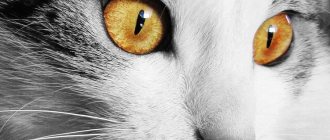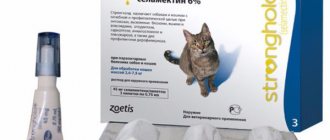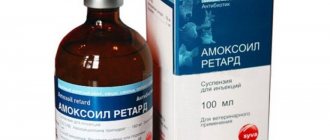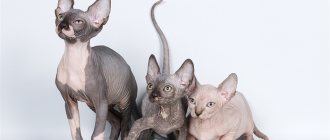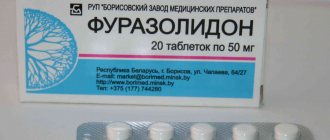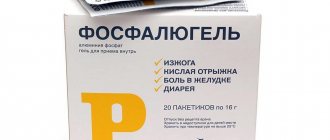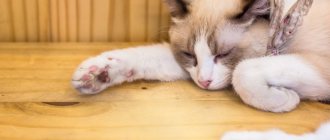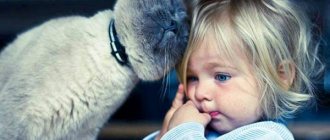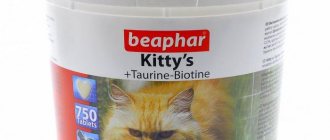4728Pavel
The active ingredient of this medicine for cats is methionine, a sulfur-containing essential amino acid that promotes the synthesis of immune cells, creatine, adrenaline, choline and other substances that have an important effect on the life of animals. Methionine for cats: description of the drug, release form and use - more information below.
Methionine regulates the functioning of the cat's nervous system. Helps the liver get rid of excess fat, slows down the removal of calcium from bone tissue, activates various enzymes and vitamins (mainly from groups B and C), affects the reduction of cholesterol levels and acts as a “supplier” of sulfur in certain biochemical reactions. In addition, this amino acid manifests itself as an effective antioxidant that prevents the appearance of harmful chemicals in the body. It increases overall tone and has an antidepressant effect in the cat.
© shutterstock
Without receiving this amino acid in the required quantity with food, the digestibility of protein and other substances deteriorates in animals. That is why these acids are called essential, because their role cannot be taken on by others. Lack of methionine significantly affects productivity in livestock and poultry farming. It prevents bone fragility.
Veterinarians recommend this drug for cats that have problems with the liver and metabolism. Once in the intestines, it is quickly absorbed and also quickly excreted along with urine . Methionine for kidney failure in cats is a proven remedy that is worth trying to cure your furry friend.
Dosage
The animal should receive the drug half an hour to an hour before feeding, no more than three times a day. For each pet, the veterinarian sets the dosage of the medicine individually. One therapeutic course takes from 10 to 30 days. The break between the first and subsequent ones (if they are necessary) must be at least 10 days.
© shutterstock
Where is taurine found?
The amino acid taurine is found in the meat of mice, rats and other rodents - it is the basis of the diet for the cat family in the wild.
One medium-sized mouse provides the daily requirement for an adult domestic cat - it contains 100 mg of taurine. That is why, during the course of evolution, nature eliminated the useless function of taurine production from the cat’s body.
Taurine in natural foods
Cats, which do not have the ability to catch mice, obtain the necessary substance from other types of meat.
Most amino acids are found in red meats and fish and some offal: chicken heart and liver, beef liver.
Turkey is the leader in amino acid content among meats.
Raw tuna is the leader among fish.
In addition, a fairly large amount of taurine is found in fresh seafood: oysters, squid, mussels. All other animal products contain small amounts of taurine.
Important!
The maximum amount of essential amino acid is found in raw foods. During heat treatment of products, their freezing and subsequent defrosting, as well as fine grinding, taurine is destroyed.
Taurine in finished feeds
Modern pet food manufacturers claim that taurine is a vital element for cats. All brands, premium and higher, contain this important amino acid.
Taurine is not always present in economy-class food. Before purchasing, you must carefully study the composition of the food indicated on the packaging. This way you can make sure that your pet gets the necessary substance.
See cat food ratings.
If the food does not contain taurine or you are feeding your pet a natural diet, add taurine supplements to your cat's diet.
Important!
Recommended amino acid content: dry food - 0.1% (1000 mg per 1 kg), wet food -0.2% (2000 mg per 1 kg).
Best Taurine Supplements
Veterinary pharmacies and pet supply stores offer a wide selection of treats, vitamins and feed supplements containing this amino acid.
Manufacturers produce them in the form of tablets, pastes, fortified solutions, treats in the form of hearts and fish, dragees, powders and crackers.
Read: The best vitamins for cats.
The type of supplement and its dosage should be recommended by a veterinarian depending on the age, physiological condition and health of the pet. We studied the offers of pet stores and veterinary pharmacies and compiled a list of the best supplements with the amino acid taurine:
- Beaphar Top 10 is a multivitamin complex with taurine. Release form: tablets. Ingredients: calcium, phosphorus, magnesium, manganese, iodine, potassium, sodium, vitamins B1, B2, B6, B12, pantothenic acid, nicotinamide, biotin, L-carnitine. Taurine content – 1150 mg/kg.
- Omega NEO – tablets for adult cats with biotin and taurine. Contains all necessary microelements and vitamins, Omega-3, yeast, Orlean tree seed extract.
- Canina Taurin is a fortified powder for adding to dry and wet food. It has a protein composition, contains yeast and taurine.
- GimPet Taurine Paste – paste with yeast, vitamins and taurine. Contains: vitamins A, D, E. Taurine content – 6000 mg.
- Ceva is a multivitamin treat with biotin and taurine. Release form: tablets.
- GimCat Nutri Pockets Taurine-Beauty Mix – crackers with vitamins. Release form: protein pads with filling. Taurine content – 750 mg.
- GimPet Schnurries – taurine “hearts”. A delicacy based on salmon meat with vitamins. Taurine content – 2000 mg/kg.
- Japan Premium Pet Matatabi, Taurine Power - powder with an immunomodulatory effect. Ingredients: taurine, 100% purified matatabi.
- Taufon - eye drops with taurine. Sold in a regular pharmacy. Approved for use in cats. A budget analogue of the drug Taufon is Taurine eye drops.
- Gimpet Topinis – taurine “mice”. A treat with vitamins A, B, D, E, C and the amino acid taurine. Available in various flavors: fish, cottage cheese, milk.
Contraindications
This medicine for cats has a strong odor and unpleasant taste. For this reason, pets may experience nausea and even vomiting. For females expecting offspring and animals with diagnosed kidney disease, the drug should be prescribed very carefully. There have been cases where, when taking this medicine, allergies and increased blood clotting were observed. An overdose in cats causes a rapid heartbeat, and animals may also experience disorientation in space.
CAT HOUSE. Features of the nutritional needs of cats
Cats have very different dietary needs than dogs due to their digestive characteristics. Special nutritional needs of cats include:
High protein content . Protein is a source of nitrogen, and cats require higher levels of protein than dogs. This occurs due to the inability of the cat's liver to regulate the level of protein processing. If there is not enough protein in the body, very soon the cat’s body begins to use the protein that makes up its muscles.
Taurine . Taurine is an amino acid essential for proper bile production, eye health, and heart muscle function. Cats have a high need for taurine. If there is not enough taurine, diseases such as dilated cardiomyopathy develop, reproductive ability decreases, and kittens experience abnormal development.
Arginine . Arginine is an aliphatic amino acid. Most animals produce it themselves. With the help of arginine, the cat’s body produces another amino acid - ornithine. Ornithine is necessary for binding ammonia, which is produced as a result of protein breakdown. If a cat's diet lacks arginine, it will not be able to produce enough ornithine to bind ammonia, resulting in conditions such as drooling, ataxia (impaired coordination of movements), and even death due to high ammonia levels.
Such symptoms can be observed several hours after eating, when the body produces large amounts of ammonia.
Arachidonic acid . Arachidonic acid is one of the important fatty acids. Dogs make it from linoleic acid or gamma-linoleic acid. Cats are not able to do this. Arachidonic acid helps regulate the formation of new skin cells, and also serves to normalize blood clotting, the functioning of the reproductive and gastrointestinal systems. Arachidonic acid is found in animal fats and should be included in your cat's diet. Like dogs, cats also require another fatty acid, linoleic acid .
of vitamin A. Cats lack an enzyme that can convert beta carotene into retinol (the active form of vitamin A). Therefore, their diet should include food products of animal origin. Vitamin A deficiency is rare. Its symptoms include night blindness, growth retardation, and poor skin and coat condition.
A nicotinic acid . Many animals can synthesize niacin (vitamin B) from the amino acid tryptophan. However, cats cannot produce it in sufficient quantities, so it is essential in their diet. Nicotinic acid deficiency can lead to loss of appetite and weight, gum inflammation and hemorrhagic diarrhea.
Starch . In cats, the need for starch and the ability to digest it are quite low.
Differences between the nutritional needs of cats and dogs
| Ingredient | Unit of measurement (in dry matter) | Young animals and breeding animals, minimum | Adults, minimum |
| Cats | |||
| Protein | % | 30,0 | 26,0 |
| Arginine | % | 1,25 | 1,04 |
| Taurine | % | 0,1 | 0,1 |
| Arachidonic acid | % | 0,02 | 0,02 |
| Vitamin A | IU/kg | 9 000 | 5 000 |
| Vitamin B3 | mg/kg | 60 | 60 |
| Vitamin B6 | mg/kg | 4 | 4 |
| Dogs | |||
| Protein | % | 22 | 18 |
| Arginine | % | 0,62 | 0,51 |
| Taurine | % | NE* | NE* |
| Arachidonic acid | % | NE* | NE* |
| Vitamin A | IU/kg | 5 000 | 5 000 |
| Vitamin B1 | mg/kg | 1 | 1 |
| Vitamin B3 | mg/kg | 11,4 | 11,4 |
| Vitamin B6 | mg/kg | 1 | 1 |
| *NE = no minimum content established | |||
Zinc is a mineral that is added to commercial cat and dog foods. Various factors influence the body's absorption of zinc.
The recommended zinc intake for cats is 75 mg/kg food intake.
Absorption of zinc and its sources
Zinc is not easily absorbed by the body. According to research results, from 5 to 40% of zinc is absorbed. The absorption of this mineral is influenced by various factors. The first is heredity, the second is the addition of fiber to the feed. Plants contain a substance called phytite, which binds zinc and reduces its absorption. Therefore, animals fed a plant diet are at high risk of developing zinc deficiency.
Also, a deficiency of this mineral in the body can occur if you feed the animal food with a high calcium content. If a cat has inflammatory bowel disease, then this zinc deficiency occurs due to the inability to absorb it. Meat and bones contain more zinc than plant ingredients.
| Ingredient | Zinc content in mg/kg |
| Pearl barley | 44.4 |
| Corn | 13 |
| Oats | 39.2 |
| Rice | 24.4 |
| Wheat | 20 |
| Soy products | 57.9 |
| Fish | 157 |
| Meat and bones | 101 |
Zinc toxicity
Cases of poisoning due to an overdose of zinc are very rare. If the feed contains too much zinc, then animals may develop copper and iron deficiency. An animal can become poisoned by zinc if it swallows a piece of zinc edging from a shipping box, zinc ointment, or drinks or eats something from a galvanized vessel.
Dietary supplements with zinc
Zinc is included in many preparations intended to improve the quality of an animal's coat and treat skin diseases. It is also found in all high-quality vitamin supplements, as well as fatty acid supplements. There is no obvious evidence that zinc improves the immune system, but the positive effect it has on the coat and skin of the animal is documented. Animals usually get enough zinc from a well-balanced diet. If your cat is losing fur, it may be helpful to give her a supplement containing increased amounts of zinc, especially in combination with fatty acids.
Copper requirements
Function of copper
Copper is essential for many processes in the body, such as the formation of collagen, bone and connective tissue, iron absorption, and red blood cell development and maturation. Copper also functions as an antioxidant and is involved in the formation of pigment in the hair.
Sources of copper in foods
Copper is found in liver, fish, whole grains and beans. Most quality commercial cat foods have copper added.
Daily copper intake
The daily allowance for kittens, pregnant cats and newborns is 2.3 mg copper for every 400 g of canned food (dry matter basis) and 7 mg for every 400 g of dry food. These recommendations are based on unpublished research that suggests copper is poorly absorbed by pregnant cats. For adult cats and kittens, the daily dose is 2.3 mg of copper per 400 g of dry or canned food. Copper should not be ingested in the form of copper oxide.
Copper absorption
Copper is absorbed by the stomach and small intestine and deposited in the cat's liver, kidneys and brain. Many substances can impair the absorption of copper, such as vitamin C (in large quantities), increased doses of calcium, zinc, iron and sulfur. Poisonous metals, such as cadmium, silver or lead, also affect the deterioration of digestibility.
Copper deficiency
Rarely found in cats and dogs. Animals with copper deficiency suffer from anemia, they have problems with the reproductive organs, malformation of fetuses and abnormalities in bone formation are common.
Copper toxicity
As a rule, cats do not suffer from an excess of copper in the body. Typical signs of copper poisoning include lethargy, vomiting, jaundice and weight loss.
Source
How to understand that a kitten lacks vitamins from food
If a pet lacks certain vitamins, its health begins to suffer, its beauty is lost, and its behavior changes. The following signs are typical for vitamin deficiency:
- decreased activity, loss of interest in toys;
- growth slowdown;
- prolonged sleep, lethargy;
- lack of confidence in movement, clumsiness;
- dull appearance of fur, its loss;
- lack of weight gain or sudden weight loss;
- susceptibility to infectious diseases.
These symptoms indicate that you need to consult a specialist as soon as possible. You can find out which vitamins and elements your kitten lacks through laboratory tests.
How much taurine does a cat need?
Studies have found that cats' taurine requirement is 0.1% of food dry matter. The granules contain approximately 90% dry matter. Therefore, the optimal amount of sulfoamino acid in the feed mixture will be 0.1/90*100=0.11%.
Be sure to read:
Homemade cat food: how to prepare, allowed and prohibited foods, the best recipes
However, during heat treatment, proteins are denatured and the absorption of taurine from the intestines into the blood drops sharply. Thus, wet food must include 0.2% taurine on a dry matter basis. If the dry matter content is 25%, you need to add 0.2/25*100=0.8%.
In the production of finished feed, high-temperature drying methods are used, which ensure minimal loss of amino acids.
Historical reference
In the 1980s, it was discovered that DCM in cats may be caused by low levels of taurine in food.
Since 1975, it has been known that amino acid deficiency can cause central retinal degeneration and blindness in cats. While investigating the underlying mechanisms involved in this condition, researchers from the University of Davis (California) noted that several cats in this group developed DCM.
Following this study, scientists identified a relationship between low plasma concentrations of this nutrient and echocardiographic signs of DCM in cats.
In addition, it was found that the addition of taurine to food leads to an increase in its content in plasma and can lead to normalization of left ventricular function.
After this, manufacturers adjusted the composition of industrial feeds.
